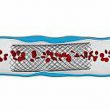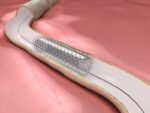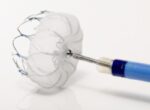Background: Octogenarian patients represent an increasingly growing population. In addition, this age group has a higher proportion of co-morbidities with more extensive and complex coronary disease. However, they have often been excluded from major studies, whose average age is usually 60 years. Despite having a more complex coronary anatomy, the role of pharmacological stent (DES)<a href="https://solaci.org/en/2015/06/24/xima-randomized-prospective-study-comparing-everolimus-eluting-stents-versus-conventional-stent-implantation-in-octogenarians/" title="Read more" >...</a>
ARCTIC-INTERRUPTION: 1 years versus 2 years of double anti-platelet
This study randomized 1259 patients to receive one year versus 2 years of double anti anti-platelet after implantation of a drug-eluting stent. The primary end point was a composite of death, myocardial infarction, stroke, stent thrombosis, and urgent revascularization that were equivalent between the two schemes. There was a trend to a higher rate of<a href="https://solaci.org/en/2015/06/24/arctic-interruption-1-years-versus-2-years-of-double-anti-platelet/" title="Read more" >...</a>
2nd-generation drug-eluting stents, results for “real” patients at two years
Original title: Clinical Outcome Following Stringent Discontinuation of Dual Anti-Platelet Therapy After 12 Months in Real-World Patients Treated With Second-Generation Zotarolimus-Eluting Resolute and Everolimus-Eluting Xience V Stents: Two-Year Follow-up of the Randomized TWENTE Trial. Reference: Keneth T, Hanim S, et al. J Am Coll Cardiol 2013. Article in press. In recent years there have been new drug-eluting<a href="https://solaci.org/en/2015/06/02/2nd-generation-drug-eluting-stents-results-for-real-patients-at-two-years/" title="Read more" >...</a>
Double Anti platelet aggregation would be sufficient for six months after angioplasty in patients with stable coronary disease NSTSEACS.
Original title: 6- Versus 24-Month Dual Antiplatelet Therapy After Implantation of Drug. Reference: Eluting Stents in Patients Nonresistant to Aspirin The Randomized, Multicenter ITALIC Trial. JACC.VOL. 65, NO. 8, 2015 Current recommendations on dual antiplatelet therapy (DAPT) are under review, particularly in acute coronary events due largely to the advent of second-generation stents. This work studied the hypothesis<a href="https://solaci.org/en/2015/03/10/double-anti-platelet-aggregation-would-be-sufficient-for-six-months-after-angioplasty-in-patients-with-stable-coronary-disease-nstseacs/" title="Read more" >...</a>
Stent reestenosis, the only subgroup that benefits from longer double antiaggregation
Original title: Short vs. Long Term Duration of Dual Antiplatelet Therapy in Patients treated for InstentRestenosis. A PRODIGY Trial substudy. Reference: Gianluca Campo el al. J Am CollCardiol, article in press. In the study PRODIGY (Prolonging Dual Antiplatelet Treatment After Grading Stent- Induced Intimal Hyperplasia) we found that the 24 months ratio of dual antiaggregation was not<a href="https://solaci.org/en/2013/12/13/stent-reestenosis-the-only-subgroup-that-benefits-from-longer-double-antiaggregation/" title="Read more" >...</a>
Safety and superior effectiveness over two years in femoropopliteal region with drug-eluting stents
Original title: Sustained safety and effectiveness of paclitaxel-eluting stents for femoropopliteal lesions: two-year follow-up from the Zilver PTX randomized and single-arm clinical studies. Reference: Michael D. Dake et al. J Am Coll Cardiol 2013. Article in press. Studies with long-term monitoring showed mainly the limited permeability of balloon angioplasty, especially over challenging injuries such as total occlusions or<a href="https://solaci.org/en/2013/05/13/safety-and-superior-effectiveness-over-two-years-in-femoropopliteal-region-with-drug-eluting-stents/" title="Read more" >...</a>
Aspirin, Clopidogrel and Warfarin. Is it safe or is a triple scheme necessary?
Original title: Use of clopidogrel with or without aspirin in patients taking oral anticoagulant therapy and undergoing percutaneous coronary intervention: an open-label, randomised, controlled trial Reference: Dewilde WJ et al. Lancet. 2013 Mar 30;381(9872):1107-15 The question to answer was simple, relevant, and is increasingly frequent in everyday practice: what to do when a patient who is anticoagulated has<a href="https://solaci.org/en/2013/05/10/aspirin-clopidogrel-and-warfarin-is-it-safe-or-is-a-triple-scheme-necessary/" title="Read more" >...</a>
IVUS improves outcomes in long lesions with DES
Original title: Randomized Comparison of Clinical Outcomes between Intravascular Ultrasound and Angiography-Guided Drug-Eluting Stent Implantation for Long Coronary Artery Stenosis. Reference: Jung-Sun Kim et al. J Am Coll Cardiol Intv 2013. Article in press. Treating long lesions is difficult and the chance of instant thrombosis may be higher in these lesions. Coronary intravascular ultrasound (IVUS) can help in<a href="https://solaci.org/en/2013/04/11/ivus-improves-outcomes-in-long-lesions-with-des/" title="Read more" >...</a>
Appendage trans-catheter closure is equivalent to anticoagulation in fibrillated patients.
Original title: Percutaneous Left Atrial Appendage Closure for Stroke Prophylaxis in Patients With Atrial Fibrillation: 2.3-Year Follow-up of the PROTECT AF (Watchman Left Atrial Appendage System for Embolic Protection in Patients With Atrial Fibrillation) Trial. Reference: Vivek Y. Reddy et al. Circulation. 2013;127:720-729. Atrial fibrillation is the most common sustained arrhythmia in the world and its importance lies<a href="https://solaci.org/en/2013/03/01/appendage-trans-catheter-closure-is-equivalent-to-anticoagulation-in-fibrillated-patients/" title="Read more" >...</a>
Future strategies to prevent restenosis and stent thrombosis
Original title: Endothelial cell repopulation after stenting determines in-stent neointima formation: effects of bare-metal vs. drug-eluting stents and genetic endothelial cell modification. Reference: Douglas G et al. European Heart Journal doi:10.1093/eurheartj/ehs240 Experimental models of vascular injury have shown that the rate of endothelial cell repopulation post-injury is a critical factor in determining subsequent neointima formation as well as<a href="https://solaci.org/en/2012/12/04/future-strategies-to-prevent-restenosis-and-stent-thrombosis/" title="Read more" >...</a>









